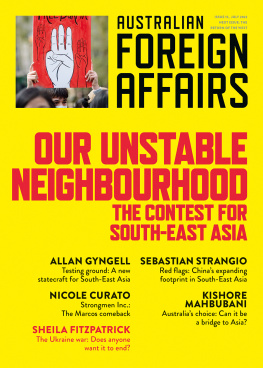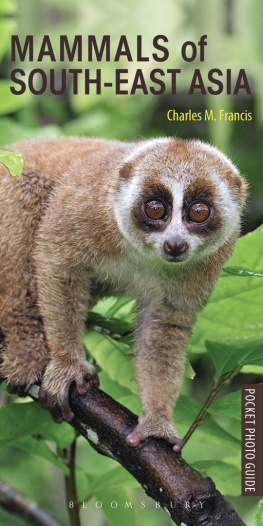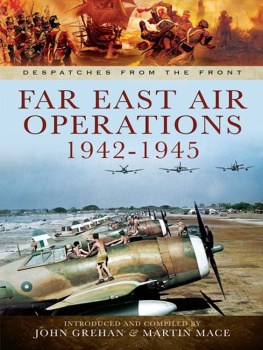KRATOSKA P - South East Asia Colonl Hist V5
Here you can read online KRATOSKA P - South East Asia Colonl Hist V5 full text of the book (entire story) in english for free. Download pdf and epub, get meaning, cover and reviews about this ebook. year: 2004, publisher: Routledge, genre: Politics. Description of the work, (preface) as well as reviews are available. Best literature library LitArk.com created for fans of good reading and offers a wide selection of genres:
Romance novel
Science fiction
Adventure
Detective
Science
History
Home and family
Prose
Art
Politics
Computer
Non-fiction
Religion
Business
Children
Humor
Choose a favorite category and find really read worthwhile books. Enjoy immersion in the world of imagination, feel the emotions of the characters or learn something new for yourself, make an fascinating discovery.

- Book:South East Asia Colonl Hist V5
- Author:
- Publisher:Routledge
- Genre:
- Year:2004
- Rating:4 / 5
- Favourites:Add to favourites
- Your mark:
- 80
- 1
- 2
- 3
- 4
- 5
South East Asia Colonl Hist V5: summary, description and annotation
We offer to read an annotation, description, summary or preface (depends on what the author of the book "South East Asia Colonl Hist V5" wrote himself). If you haven't found the necessary information about the book — write in the comments, we will try to find it.
South East Asia Colonl Hist V5 — read online for free the complete book (whole text) full work
Below is the text of the book, divided by pages. System saving the place of the last page read, allows you to conveniently read the book "South East Asia Colonl Hist V5" online for free, without having to search again every time where you left off. Put a bookmark, and you can go to the page where you finished reading at any time.
Font size:
Interval:
Bookmark:

- VOLUME V Peaceful Transitions To Independence (19451963)
- Introduction
- Burma
- Burma B. R. PEARN
- British blue print for Burma ALICE THORNER
- The future of Burma J. S. FURNIVALLJ. S. FURNIVALL
- Twilight in Burma: reconquest and after J. S. FURNIVALL
- Nationalism in British colonial Burma CECIL HOBBS
- Frontier areas committee of enquiry ANONYMOUS
- The new nation of Burma VIRGINIA THOMPSON
- Burma compromise CLARENCE HENDERSHOT
- Burma stands alone SIR RAIBERT M. MACDOUGALL
- Burmas struggle for independence: the transfer of power thesis re-examined HUGH TINKER
- Malaya
- Malaya B. R. PEARN
- Status quo for Malaya RAYMOND KENNEDY
- A Malayan union: the proposed new constitution VICTOR PURCELL
- Reactions to the Malayan union GERALD HAWKINS
- The constitutional position in Malaya D. R. REES-WILLIAMS
- Marking time in Malaya GERALD HAWKINS
- The communist uprising in Malaya IAN MORRISON
- Forces for unity in Malaya: observations of a European resident T. H. SILCOCK
- Policy for Malaya, 1952 T. H. SILCOCK
- British imperial policy and decolonization in Malaya, 194252 A. J. STOCKWELL
- Constitutional change in Malayas plural society J. NORMAN PARMER
- Malayathe new nation SIR DONALD MACGILLIVRAY
- Singapore
- Singapore LENNOX A. MILLS
- British Borneo
- Status of British Borneo RAYMOND KENNEDY
- The anti-cession movement in Sarawak YUSUF PETER HEATON
- Malaysia
- The troubled birth of Malaysia HAMILTON FISH ARMSTRONG
- Malaysia R. S. MILNE
- Brunei
- British administration in Brunei 19061959 A. V. M. HORTON
- The Philippines
- The Philippines B. R. PEARN
- American policy in the Philippines ABRAHAM CHAPMAN
- Note on the Philippine elections ABRAHAM CHAPMAN
- Philippines SHIRLEY JENKINS
- The republic of the Philippines RUSSELL H. FIFIELD
- Goodbye, Mother America: an overview of Philippine American relations, 18991969 THEODORE FRIEND
- Siam
- Siam B. R. PEARN
Font size:
Interval:
Bookmark:
Similar books «South East Asia Colonl Hist V5»
Look at similar books to South East Asia Colonl Hist V5. We have selected literature similar in name and meaning in the hope of providing readers with more options to find new, interesting, not yet read works.
Discussion, reviews of the book South East Asia Colonl Hist V5 and just readers' own opinions. Leave your comments, write what you think about the work, its meaning or the main characters. Specify what exactly you liked and what you didn't like, and why you think so.




